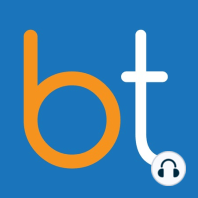27 min listen

Ep. 237 Endovascular Treatment of Stroke Training: An Update with Dr. Martin Radvany and Dr. Venu Vadlamudi
Ep. 237 Endovascular Treatment of Stroke Training: An Update with Dr. Martin Radvany and Dr. Venu Vadlamudi
ratings:
Length:
54 minutes
Released:
Aug 26, 2022
Format:
Podcast episode
Description
In this episode, guest host Dr. Venu Vadlamudi interviews Dr. Martin Radvany about where neurointerventional training stands in 2022, including stroke training for residents, barriers that IRs face in finding training after residency, and future directions of stroke care.
---
CHECK OUT OUR SPONSOR
RapidAI
http://rapidai.com/?utm_campaign=Evergreen&utm_source=Online&utm_medium=podcast&utm_term=Backtable&utm_content=Sponsor
---
EARN CME
Reflect on how this Podcast applies to your day-to-day and earn AMA PRA Category 1 CMEs: https://earnc.me/s3zGTV
---
SHOW NOTES
We begin by discussing stroke training in neurointerventional radiology. The Society of Interventional Radiology (SIR) has been prioritizing stroke training for IRs for years, with their former Clots Course and current Stroke Course, with Dr. Vadlamudi and Dr. Radvany as the directors of the course. This course occurs at the annual SIR meetings. Courses such as these are necessary because many residents aren’t trained in neurointervention but when they get out in the community the need is there and their employers often expect them to be able to provide stroke care. Dr. Vadlamudi hopes to grow the stroke course and eventually break away from the annual SIR meeting into it’s own free-standing course, such as has been done with the Y90 course.
Next, we cover some of the barriers to IRs getting involved in stroke care. Often, practitioners with years of experience want or need to start performing neuroendovascular interventions but didn’t get a lot of experience in their training. Industry support is an important area that requires some growth to be able to support this pathway for IRs already in practice. Simulators are also a key aspect in training, and we discuss the possibilities of leveraging this for stroke training. By bringing patient specific anatomy into the simulator, anyone could use this to train in stroke thrombectomy and be able to practice with a patient's unique anatomy before performing the actual case.
Finally, we discuss what trainees should expect going forward in IR residency and neuro fellowship. Interventional radiology is becoming very clinical, and it is important for trainees to focus on this. Spend the time in the ICU and on the floor. Knowing how to take care of your patients is essential in IR; we need to do more than just master the procedures. There are many ways to get training in stroke intervention. Mentorship at all levels is important and encouraged to push the field forward.
---
RESOURCES
Outcomes of Stroke Thrombectomy Performed by Interventional Radiologists versus Neurointerventional Physicians:
https://pubmed.ncbi.nlm.nih.gov/35150837/
---
CHECK OUT OUR SPONSOR
RapidAI
http://rapidai.com/?utm_campaign=Evergreen&utm_source=Online&utm_medium=podcast&utm_term=Backtable&utm_content=Sponsor
---
EARN CME
Reflect on how this Podcast applies to your day-to-day and earn AMA PRA Category 1 CMEs: https://earnc.me/s3zGTV
---
SHOW NOTES
We begin by discussing stroke training in neurointerventional radiology. The Society of Interventional Radiology (SIR) has been prioritizing stroke training for IRs for years, with their former Clots Course and current Stroke Course, with Dr. Vadlamudi and Dr. Radvany as the directors of the course. This course occurs at the annual SIR meetings. Courses such as these are necessary because many residents aren’t trained in neurointervention but when they get out in the community the need is there and their employers often expect them to be able to provide stroke care. Dr. Vadlamudi hopes to grow the stroke course and eventually break away from the annual SIR meeting into it’s own free-standing course, such as has been done with the Y90 course.
Next, we cover some of the barriers to IRs getting involved in stroke care. Often, practitioners with years of experience want or need to start performing neuroendovascular interventions but didn’t get a lot of experience in their training. Industry support is an important area that requires some growth to be able to support this pathway for IRs already in practice. Simulators are also a key aspect in training, and we discuss the possibilities of leveraging this for stroke training. By bringing patient specific anatomy into the simulator, anyone could use this to train in stroke thrombectomy and be able to practice with a patient's unique anatomy before performing the actual case.
Finally, we discuss what trainees should expect going forward in IR residency and neuro fellowship. Interventional radiology is becoming very clinical, and it is important for trainees to focus on this. Spend the time in the ICU and on the floor. Knowing how to take care of your patients is essential in IR; we need to do more than just master the procedures. There are many ways to get training in stroke intervention. Mentorship at all levels is important and encouraged to push the field forward.
---
RESOURCES
Outcomes of Stroke Thrombectomy Performed by Interventional Radiologists versus Neurointerventional Physicians:
https://pubmed.ncbi.nlm.nih.gov/35150837/
Released:
Aug 26, 2022
Format:
Podcast episode
Titles in the series (100)
Ep. 1 BM BX Devices: Jamshidi vs OnControl: Listen to New Orleans IR Christopher Beck MD and … by BackTable Vascular & Interventional